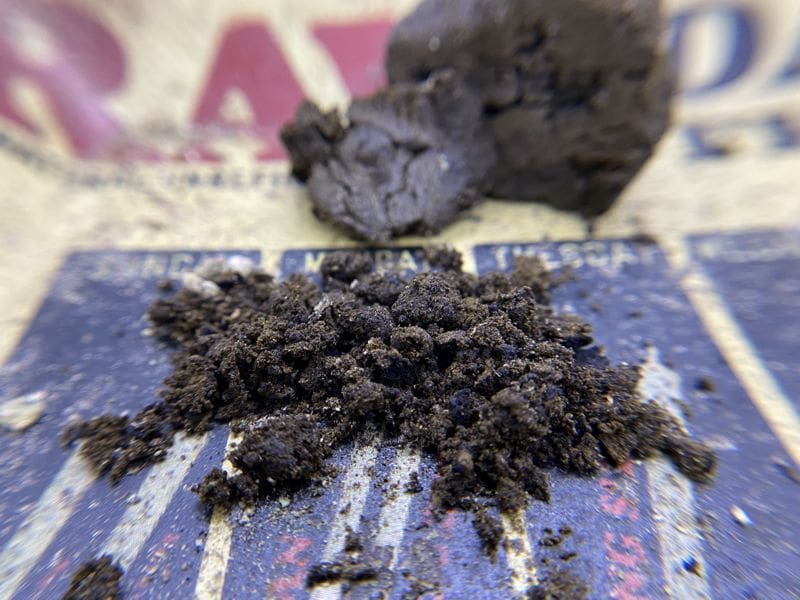Canada has long been known for its thriving cannabis market, with different provinces and territories often offering their unique selection and pricing. In this article, we will take a closer look at the hash prices across Canada, examining the trends and variations in different regions. Whether you’re a resident or a curious visitor, this review will provide valuable insights into the cost and availability of hash in the Great White North. So sit back, relax, and let’s explore the fascinating world of Canadian hash prices.
Overview of Hash Market in Canada
Welcome to our comprehensive article on the hash market in Canada! In this article, we will provide you with an overview of the background, legal status, popularity, and consumer preferences of hash in Canada.
We will also dig into the factors that influence hash prices:
- Compare prices across provinces
- Analyze the impact of legalization on hash prices
- Discuss hash prices in relation to other cannabis products
- Address the detrimental effects of high prices
- Examine price fluctuations over time
- Explore the government’s role in regulating hash prices
- Compare the Canadian hash market to international markets
Finally, we will conclude with a discussion on the future of hash pricing in Canada, including projections, potential impact on consumer habits, and long-term market forecasts.
Background of Hash in Canada
Hash, also known as hashish, is a concentrated form of cannabis that has a rich history in Canada. It is derived from the resinous trichomes of the cannabis plant, which are collected, processed, and then formed/pressed into various shapes, such as blocks or balls. Hash has been used for centuries for its potent effects and therapeutic properties. In Canada, the use of hash has gained popularity since the 1960s, with an increasing number of hash enthusiasts seeking out this concentrated form of cannabis.
Guide: Comparison of Canadian Hash Prices

To summarize accurate hash prices in Canada, the following prices are sourced from legal and nonregulated online dispensaries that ship hash nationwide via Canada Post. It’s important to note that these prices are subject to change and may fluctuate depending on the factors we discussed earlier.
Hash prices in Canada sourced from online dispensaries are as follows:
Nonregulated online dispensaries:
- I gram of domestic or imported hash: $8 to $25 per gram
- 3.5 grams of domestic or imported hash: $40 to $70 per eighth
- 7 grams of domestic or imported hash: $95 to $110 per quarter
- 14 grams of domestic or imported hash: $180 to $210 per half ounce
- 28 grams of domestic or imported hash: $350 to $400 per ounce
- 112 grams of domestic or imported hash: $1200 to $1400 per quarter pound (4 ounces)
- 224 grams of domestic or imported hash: $2300 to $2600 per half pound (8 ounces)
- 448 grams of domestic or imported hash: $4000 to $4500 per pound (slab/brick)
Sources: West Coast Cannabis and Budlyft Online Dispensary
Legal Online dispensaries:
- I gram of domestic legal hash: $10 to $17 per gram – Sources: OCS and BC Cannabis Stores
Factors Influencing Hash Prices
When it comes to hash prices in Canada, several factors come into play. Understanding these factors is crucial for both consumers and industry players. The quality and strains of hash, regional availability, the existence of legal and illicit markets, and government regulations and taxes all influence the price of hash.
Quality and Strains of Hash
Just like with any cannabis product, the quality and strains of hash significantly impact its price. Higher-quality hash, made from premium cannabis cultivars and with meticulous extraction processes, generally commands a higher price. Additionally, hash made from rare or exotic strains, known for their unique flavors, aromas, or effects, may also be priced higher due to their limited availability. Cheaper hash is made from lower quality buds, typically AA to AAA quality flowers.
Regional Availability
The availability of hash varies across different provinces in Canada, and this can impact the pricing. Provinces with a higher number of licensed producers and cannabis retailers may have a more competitive market, leading to lower prices. Conversely, provinces with limited access to legal sources of hash may have higher prices due to the scarcity of supply. The transportation and distribution costs involved in bringing hash to different regions can also influence pricing.
Legal and Illicit Market Prices
The coexistence of legal and illicit markets in Canada has an undeniable effect on hash prices. In all provinces, illicit cannabis sales remain prevalent due to online dispensaries, and consumers may have access to lower-priced hash from unregulated sources. The competition between legal and illicit markets can drive down prices in some cases, while the additional costs associated with compliance and quality assurance in the legal market may result in higher prices.
Government Regulations and Taxes
Government regulations and taxes also play a role in determining hash prices. Licensed producers and retailers in the legal market must comply with strict regulations, including security measures, quality control, and licensing fees, which can increase production costs. Additionally, taxes, such as excise taxes and sales taxes, are applied to legal cannabis products, including hash, which can add to the final price paid by consumers.
Legal Status of Hash
The legal status of hash in Canada has evolved significantly in recent years. Prior to the legalization of recreational cannabis in October 2018, hash was considered illegal under the Controlled Drugs and Substances Act. However, with the legalization of cannabis, including hash, for recreational use, Canadians aged 19 and older are now able to legally purchase and consume domestic hash. This change in the legal status of hash has opened up new opportunities for the industry and has had a profound impact on the market.
Popularity and Consumer Preferences

Hash crumble found in my Zig Zag hash review.
Since the legalization of hash in Canada, its popularity has continued to grow. Many consumers are drawn to hash for its higher potency compared to traditional cannabis flower. The concentrated nature of hash allows for a more intense experience, making it appealing to both recreational and medical users. Additionally, the versatility of hash allows for different consumption methods, such as smoking, or vaporizing. Consumer preferences in terms of strains and quality of hash vary, with some seeking out specific strains or terpene profiles, while others prioritize potency or flavor.
Hash Prices in British Columbia
British Columbia, known for its vibrant cannabis culture, offers a range of hash products. On average, the price of hash in British Columbia is relatively competitive compared to other provinces. Due to the province’s long-standing relationship with cannabis and a higher number of licensed producers, consumers in British Columbia may have access to a wider variety of hash products at more affordable prices.
90% of the hash that’s avialble from the online illicit marketplace comes from online dispensaries that are based out on BC.
Hash Prices in Quebec
Quebec, like other provinces, has seen an increase in the availability of legal hash products. However, the pricing in Quebec tends to be slightly higher compared to some other provinces. This can be attributed to the province’s stricter regulations and higher taxes. Additionally, the influence of the illicit market may still be present, impacting prices in some areas.
Hash Prices in Ontario
Ontario, the most populous province in Canada, offers a diverse range of hash products for consumers. Prices in Ontario can vary depending on factors such as the quality, strain, and source of the hash. However, due to the competition in the legal market and the higher number of licensed retailers, consumers in Ontario may have more options and potentially find competitive prices.
Hash Prices in Alberta
Alberta has emerged as a significant player in the legal cannabis market, and the prices of hash in the province reflect this growth. Alberta boasts a competitive market with a wide range of hash products available to consumers. The province’s strong cannabis culture, combined with the presence of licensed retailers, has contributed to a more accessible market and potentially more affordable prices.
Hash Prices in Manitoba
Manitoba, like some other provinces, has faced challenges related to the availability and pricing of hash. The province’s limited number of licensed producers and cannabis retailers may contribute to higher prices. However, with the continued growth of the legal market and an increase in licensed retailers, the availability and pricing of hash in Manitoba may improve over time.
Impact of Legalization on Hash Prices
The legalization of hash and cannabis for recreational use in Canada has had a profound impact on the market. Let’s explore the changes that have occurred since legalization, compare current prices with pre-legalization prices, and examine the consumer response to these changes.
Market Changes Since Legalization
Since the legalization of hash in Canada, the market has experienced significant growth and transformation. The number of licensed producers and cannabis retailers has increased, providing consumers with a wider selection of hash products. This increased competition has contributed to a potential decrease in prices, as companies strive to attract and retain customers.
Comparisons with Pre-Legalization Prices
Before legalization, hash prices were generally higher due to the limited availability and the risks associated with the illicit market. The demand for hash was present, but consumers had limited options, often relying on unregulated sources. With the legalization of hash, prices have become more transparent and competitive. Consumers now have access to regulated products, which are subject to quality control and testing.
Consumer Response to Legalization
The response from consumers following the legalization of hash has been largely positive. Many consumers appreciate the convenience and safety of purchasing hash from legal sources. The availability of a wider variety of hash products, coupled with the ability to make informed decisions about potency, strains, and quality, has empowered consumers. Additionally, the legal market allows for responsible consumption and provides resources for education on proper usage.
Hash Prices in Relation to Other Cannabis Products
To better understand the pricing of hash in Canada, it is helpful to compare it with other cannabis products, such as marijuana and CBD products. Let’s explore the similarities and differences in prices and the impact of other cannabinoids on hash prices.
Comparison with Marijuana Prices
Compared to marijuana flower, hash generally commands a higher price per gram. This is due to the additional steps involved in processing hash and the increased potency it offers. Hash requires the extraction of trichomes from cannabis plants, followed by further processing to create the final product. The concentrated nature of hash makes it more potent than conventional marijuana, leading to a higher demand and, consequently, a higher price point.
Comparison with CBD Product Prices
In comparison to CBD products, hash may be priced higher due to its THC content. While CBD products, such as oils or capsules, offer the potential therapeutic benefits of cannabidiol without the psychoactive effects of THC, hash contains higher levels of THC. The presence of THC in hash contributes to its recreational appeal and may lead to higher prices. However, as the demand for CBD products continues to grow, pricing may fluctuate based on market dynamics.
Impact of Other Cannabinoids on Hash Prices
Apart from THC and CBD, cannabinoids such as CBG, CBN, and CBC may also contribute to the pricing of hash. These minor cannabinoids, although present in smaller quantities, can enhance the overall effects and appeal of hash. Hash products that contain a broader spectrum of cannabinoids may be priced higher due to their potential therapeutic benefits and unique cannabinoid profiles.
Detrimental Effects of High Hash Prices
While the pricing of hash in Canada is influenced by various factors, high hash prices can have detrimental effects on the market and consumers. Let’s explore some of these effects.
Persistence of Black Market
High hash prices can contribute to the persistence of the black market. If the legal market fails to offer competitive pricing, consumers may turn to unregulated sources to find more affordable options. The black market not only poses risks in terms of product quality and safety but also undermines the efforts made towards building a regulated and transparent industry.
Increased Cost for Medical Users
For medical cannabis users who rely on hash for therapeutic purposes, high prices can present financial challenges. The medicinal benefits of hash are well-documented, and some patients require access to cost-effective options. Ensuring affordable pricing for medical users is crucial to guaranteeing their continued access to the medicine they need.
Potential for Overpricing and Price Gouging
In any emerging market, there is a risk of overpricing and price gouging. Without proper regulation and oversight, some companies may take advantage of the demand for hash and inflate prices beyond reasonable levels. Such practices could harm consumers and discourage them from participating in the legal market, perpetuating the dominance of the illicit market.
Price Fluctuations Over Time
Hash prices are subject to fluctuations over time due to various factors, including supply and demand, seasonal variations, and yearly trends. Understanding these fluctuations is essential for both consumers and industry players.
Seasonal Variations in Hash Prices
Similar to other agricultural products, hash prices may fluctuate seasonally. Factors such as outdoor cultivation, harvest times, and strain availability can influence the supply and pricing of hash. For example, if there is an abundant supply of hash during the harvest season, prices may temporarily decrease due to increased competition. Conversely, during periods of scarcity, prices may rise.
Yearly Trends and Price Changes
Yearly trends in the hash market can also impact prices. As the industry continues to evolve and expand, changes in regulations, licensing, and production capabilities can have a significant influence on hash prices. Additionally, consumer trends, such as shifts in preferences for specific strains or consumption methods, can also lead to fluctuations in pricing.
Predicted Future Price Trends
While predicting future price trends is challenging, it is anticipated that as the legal market further matures, hash prices may stabilize or potentially decrease. This is due to economies of scale, improved production techniques, increased competition, and advancements in technology. However, external factors such as changes in government regulations, supply chain disruptions, or shifts in consumer demand may also impact future pricing.
Comparison to International Hash Markets
Understanding the pricing of hash in Canada becomes more comprehensive when examined in comparison to international markets. Let’s explore hash prices in the United States and Europe and the role that international markets play on Canada’s prices.
Hash Prices in the U.S.
Hash prices in the United States vary from state to state due to varying regulations and market dynamics. In states where cannabis is legal, such as California or Colorado, hash prices are generally competitive and influenced by factors similar to those in Canada, such as quality, strain availability, and regional supply and demand. However, in states where cannabis remains illegal or is only allowed for medical use, the illicit market may prevail, impacting hash prices and availability.
Hash Prices in Europe
Europe has a long history of hash consumption, particularly in countries like the Netherlands, Morocco, and Spain. The prices of hash in Europe can vary significantly depending on the country and its legal framework. In countries with more lenient regulations, such as the Netherlands, hash prices may be relatively lower due to the availability of coffee shops and a well-established market. On the other hand, in countries with stricter regulations, prices may be higher, and the illicit market may still play a significant role.
Role of International Market on Canada’s Prices
The international hash market can indirectly impact prices in Canada. As the global hash market evolves and new regions legalize or decriminalize cannabis, the availability and pricing of hash may fluctuate. Changes in international market dynamics, including shifts in supply and demand, could influence Canada’s hash prices. Additionally, international competition, especially from countries with lower production costs, may put pressure on Canadian producers to offer competitive pricing.
Conclusion: Future of Hash Pricing in Canada
The future of hash pricing in Canada presents both opportunities and challenges. The legalization of hash for recreational use has led to market growth, increased competition, and a wider range of options for consumers. However, factors such as quality, strain availability, regional dynamics, government regulations, and the persistence of the illicit market still influence pricing. Moving forward, it is essential to strike a balance between regulation and market forces to ensure fair pricing, consumer protection, and the continued growth and success of the hash market.
By addressing the detrimental effects of high prices, monitoring price fluctuations over time, and implementing effective regulations, Canada can foster a sustainable and thriving hash market that meets the needs of both recreational and medical users. With ongoing research, innovation, and collaboration, the future of hash pricing in Canada looks promising, providing a robust foundation for the growth and evolution of the cannabis industry as a whole.
Cheers,
The Chronic Beaver

